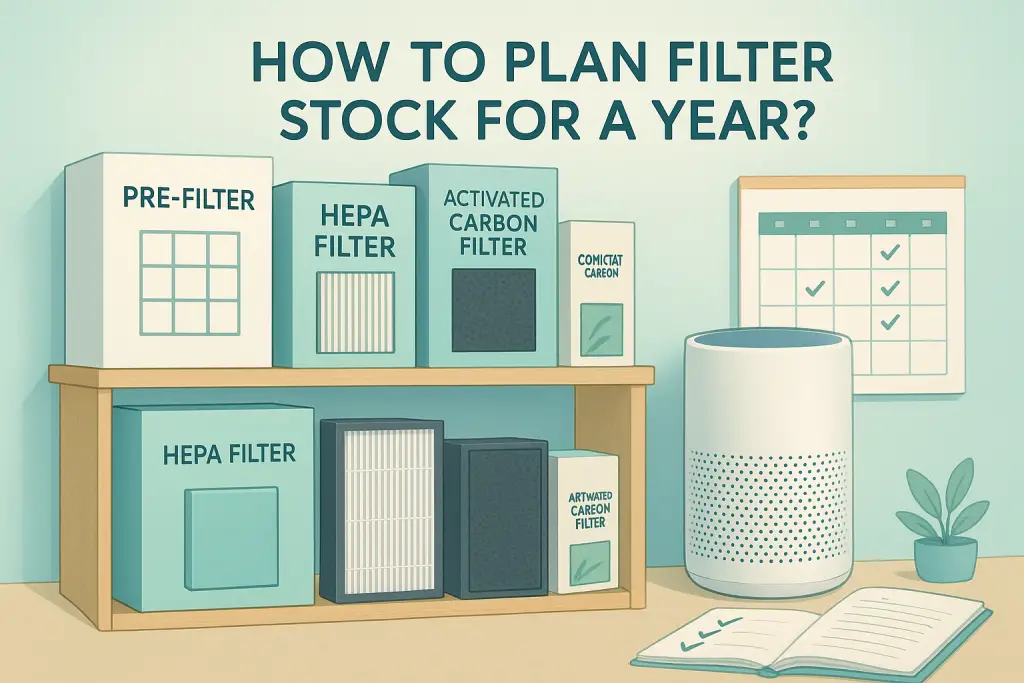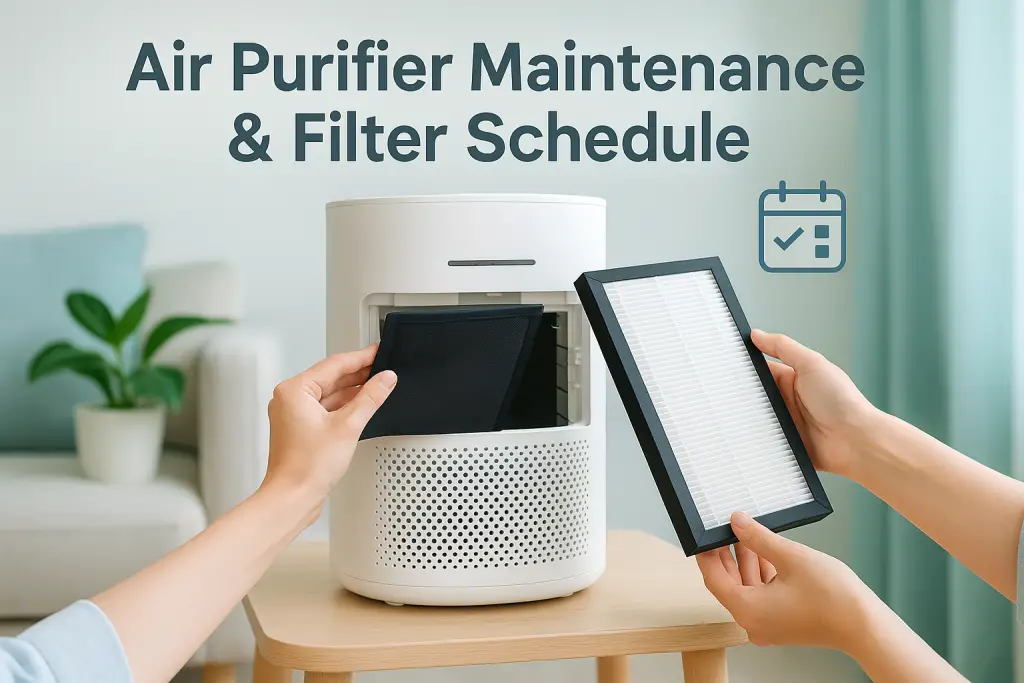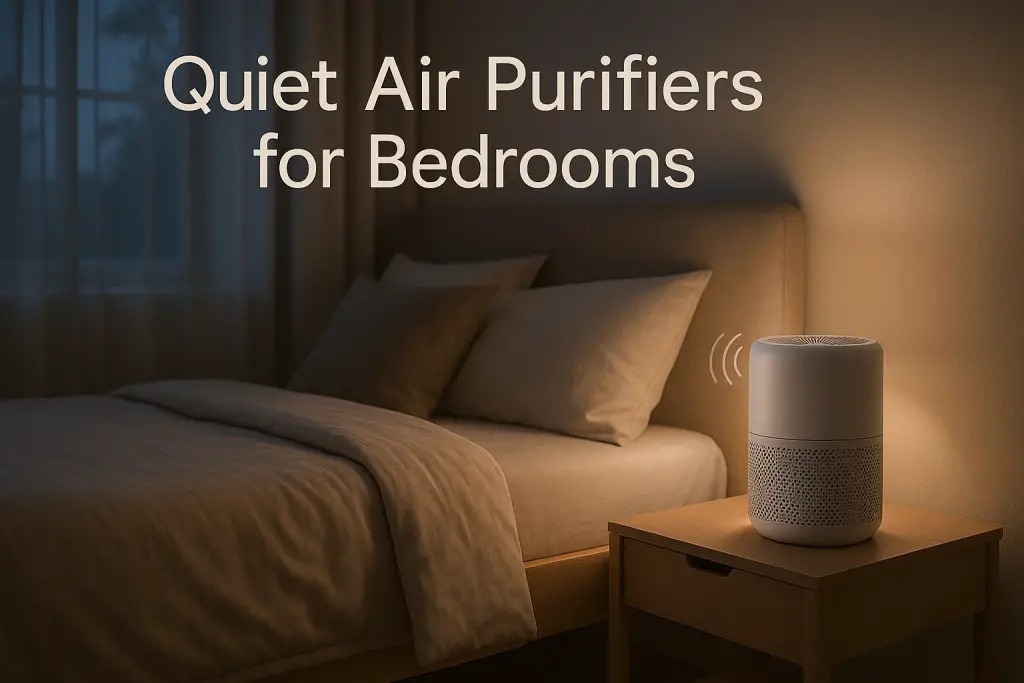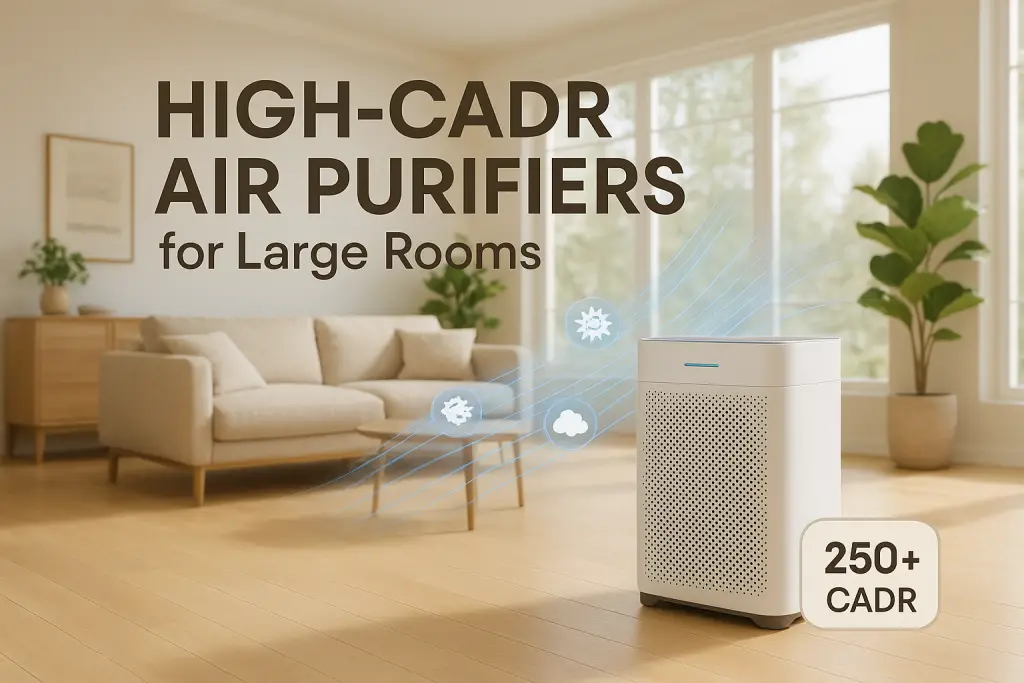Planning your air purifier filter stock for an entire year saves money, ensures consistent air quality, and eliminates the stress of emergency replacements. With proper planning, you’ll never face that moment of realizing your filter is long overdue for replacement but you have no backup ready. This comprehensive guide will walk you through creating a personalized filter replacement strategy based on your specific needs, home environment, and budget.
Why Planning Your Air Purifier Filter Stock for a Year Matters
Maintaining a year-long filter stock plan isn’t just about convenience. It directly impacts your indoor air quality, device performance, and wallet.
According to the EPA, indoor air can be 2-5 times more polluted than outdoor air. When air purifier filters reach the end of their useful life, their efficiency drops significantly. Research shows that HEPA filters can lose up to 30% of their particle capturing ability once they become saturated.
Key benefits of annual filter planning include:
- Cost savings of 15-25% through bulk purchasing and sales
- Consistent air quality without gaps in protection
- Reduced energy consumption (clogged filters make motors work harder)
- Less stress from emergency replacements
- Better allergy and asthma symptom management
Without a plan, many users end up extending filter life far beyond recommendations, compromising their air quality and potentially damaging their units.
How to Plan Filter Stock for a Year: Understanding Your Needs
Before purchasing a year’s worth of filters, you need to assess your specific requirements based on your air purifier model, home environment, and usage patterns.
Identify Your Filter Types and Specifications
Most air purifiers use multiple filter types with different replacement schedules. Start by documenting:
- Filter types (pre-filter, HEPA, carbon, etc.)
- Model numbers and dimensions
- Manufacturer recommended replacement frequency
- Compatible alternatives (OEM vs. third-party options)
Check your user manual or the manufacturer’s website for this information. Write down these details for each air purifier in your home. Some units use integrated filters while others have separate components that can be replaced individually.
Be cautious about third-party filters, as counterfeit replacement filters can compromise your air purifier’s performance and potentially void warranties.
Calculate Your Actual Replacement Frequency
Manufacturer guidelines provide a starting point, but your actual needs depend on your specific environment. Several factors can significantly increase or decrease filter lifespan:
- Pets: Can reduce filter life by 30-50%
- Smoking: May decrease filter life by up to 60%
- Allergies: Often require more frequent changes
- Home size: Smaller spaces may saturate filters faster
- Air quality: Urban or high-pollution areas need more frequent changes
- Usage time: Running 24/7 vs. occasionally
For example, if your manufacturer recommends replacing a HEPA filter every 6 months, but you have two shedding pets and live in a high-pollen area, you might need replacements every 3-4 months instead.
The question of how often you should replace HEPA and carbon filters depends on these specific environmental factors combined with manufacturer recommendations.
Choosing Your Filter Replacement Strategy
There are three main approaches to planning filter replacements. Each has benefits depending on your priorities and situation.
Schedule-Based Replacement
This approach follows a predetermined calendar for replacements regardless of filter condition.
Pros:
- Simple to implement and track
- Consistent air quality
- Easy to budget and plan purchases
- No need for condition monitoring
Cons:
- May replace filters earlier than necessary
- Doesn’t adapt to seasonal variations
- Potentially higher annual costs
To implement a schedule-based system:
- Create a calendar with replacement dates for each filter type
- Set up reminder notifications 2 weeks before each date
- Schedule bulk purchases to align with your replacement calendar
- Document each replacement to track patterns
This approach works best for busy households that want simplicity and consistency.
Condition-Based Replacement
This method relies on monitoring filter condition and replacing based on actual saturation levels.
Pros:
- Maximum filter lifespan utilization
- Adapts to actual air quality conditions
- Potentially lower annual costs
- More environmentally friendly
Cons:
- Requires regular monitoring
- More difficult to plan purchases in advance
- Potential for uneven air quality
To implement a condition-based system:
- Learn the visual indicators of filter saturation for your model
- Establish a regular inspection schedule (monthly)
- Keep backup filters on hand for immediate replacement
- Track replacement patterns to improve future planning
This approach is ideal for budget-conscious users or those with variable air quality needs.
Hybrid Replacement Strategy
This balanced approach combines scheduled replacements with condition monitoring.
Pros:
- Balances consistency with optimization
- Adapts to seasonal changes
- Provides predictability with flexibility
- Good compromise for most households
Cons:
- More complex to implement
- Requires both scheduling and monitoring
To implement a hybrid system:
- Establish maximum time limits for each filter type
- Conduct regular inspections (bimonthly)
- Replace based on condition or time limit, whichever comes first
- Adjust schedule based on seasonal patterns
This approach works well for most households and strikes a good balance between convenience and optimization.
Creating a consistent air purifier maintenance and filter schedule helps ensure your devices perform optimally year-round.
Annual Purchasing Strategies for Air Purifier Filters
Once you’ve determined your replacement frequency, you need to decide how to purchase your yearly filter supply.
Bulk Purchasing Strategy
Buying all your filters at once typically offers the greatest cost savings.
How to implement:
- Calculate your total yearly filter needs for each type
- Research bulk discounts from manufacturers or retailers
- Watch for annual sales or promotional events
- Consider purchasing during off-season periods
Typical savings: 15-25% compared to individual purchases
Storage considerations: Keep filters in original sealed packaging in a dry location away from sunlight and moisture.
This approach requires upfront investment but offers the best long-term value. When calculating your costs, remember to consider the total annual cost of ownership including both filters and power consumption.
Subscription Services
Many manufacturers and retailers offer filter subscription services.
Benefits:
- Automatic delivery on your schedule
- Usually 10-15% cheaper than one-off purchases
- No need to remember to order
- Flexible delivery frequency
- Easy to modify or cancel
Popular subscription options include Amazon Subscribe & Save, manufacturer direct programs, and specialty air quality retailers.
This approach is perfect for those who want convenience with moderate savings.
Just-in-Time Purchasing
This approach involves buying replacements shortly before needed.
Implementation tips:
- Set calendar reminders 3-4 weeks before anticipated replacements
- Maintain a list of trusted suppliers with pricing
- Keep at least one backup of each filter type
- Monitor for sales throughout the year
This method minimizes storage requirements but may cost more and risks availability issues.
Creating Your Filter Inventory Management System
A simple inventory system ensures you always have filters when needed.
Basic Inventory Tracking
Create a simple spreadsheet or use a note app to track:
- Filter types and quantities on hand
- Purchase dates and sources
- Installation dates
- Projected replacement dates
- Reorder triggers (when to buy more)
For most households, keeping one replacement filter for each type is sufficient, but for critical needs (severe allergies or medical conditions), consider a deeper backup supply.
Filter Storage Best Practices
Proper storage maintains filter effectiveness and extends shelf life:
- Keep filters in original sealed packaging until use
- Store in a cool, dry area away from direct sunlight
- Avoid basements or areas with high humidity
- Keep away from chemicals, cleaners, or strong odors
- Store flat to prevent warping or damage
Most filters have a shelf life of 1-2 years if properly stored. After filter removal, follow filter end-of-life bagging and disposal best practices to minimize contamination risks.
Adjusting Your Filter Plan for Seasonal Changes
Air quality challenges vary significantly throughout the year, requiring strategic adjustments to your filter replacement schedule.
Seasonal Filter Planning Calendar
Consider these seasonal adjustments to your basic plan:
- Spring: Install fresh filters before allergy season begins
- Summer: Monitor for wildfire smoke and be prepared to replace more frequently
- Fall: Replace before indoor heating season begins
- Winter: Monitor humidity levels and adjust for increased indoor time
Keeping extra filters on hand during high-risk periods like wildfire season or peak pollen times ensures you’re prepared for unexpected air quality issues.
Regional Air Quality Considerations
Your location significantly impacts filter needs:
- Urban areas: More frequent changes due to traffic pollution
- Wildfire-prone regions: Stock extra during fire season
- High humidity areas: Monitor for mold growth on filters
- Industrial areas: More frequent carbon filter changes
- Construction zones: Temporary increase in replacement frequency
For major home renovations or construction, you may need a post-construction IAQ reset plan to deal with the increased particulate matter and VOCs.
Specialized Filter Planning for Different Situations
Different households face unique air quality challenges requiring customized approaches.
Filter Planning for Allergy and Asthma Sufferers
For sensitive individuals, air quality is a health priority:
- Replace filters 30-50% more frequently than manufacturer recommendations
- Consider medical-grade HEPA filters where available
- Maintain deeper backup supplies
- Implement condition monitoring alongside scheduled replacements
- Keep extra filters for peak allergy seasons
Track symptom patterns in relation to filter changes to identify optimal replacement frequency.
Multi-Unit Property Filter Management
For landlords or property managers:
- Create a centralized tracking system for all units
- Implement bulk purchasing for cost efficiency
- Consider semi-annual replacement schedules for simplicity
- Develop a tenant education program about filter importance
- Include filter checks during regular property inspections
This systematic approach ensures consistent air quality across all units while minimizing costs.
Vehicle and Portable Air Purifier Considerations
Don’t forget about mobile air quality solutions:
- Include vehicle cabin filters in your annual planning
- Coordinate car maintenance with filter replacements
- Consider travel purifiers when planning your inventory
Maintaining clean air extends beyond your home. For complete protection, consider car cabin filters and healthy driving habits as part of your overall air quality strategy.
Budget Planning for Annual Filter Costs
Creating a filter budget helps avoid unexpected expenses and ensure consistent air quality.
Calculating Your Annual Filter Budget
To determine your yearly filter costs:
- List all air purifiers in your home
- Document each filter type and replacement frequency
- Research current prices (both OEM and compatible options)
- Multiply cost by annual quantity needed
- Add 15% buffer for unexpected needs or price increases
For example:
- Living Room Unit: HEPA filter ($50) replaced 2x yearly = $100
- Living Room Unit: Carbon filter ($30) replaced 3x yearly = $90
- Bedroom Unit: Combo filter ($70) replaced 2x yearly = $140
- Subtotal: $330 + 15% buffer = $380 annual budget
This budget approach helps you plan for the expense and identify opportunities for savings.
Cost-Saving Strategies Without Compromising Air Quality
Reduce costs while maintaining performance:
- Buy during annual sales (Black Friday, etc.)
- Consider compatible third-party filters from reputable sources
- Look for multi-pack discounts
- Extend pre-filter life through regular cleaning
- Join manufacturer email lists for exclusive discounts
Never compromise air quality by extending main HEPA or carbon filter life beyond reasonable limits.
Troubleshooting Your Annual Filter Plan
Even well-designed plans may need adjustments. Watch for these common issues:
- Filters saturating faster than expected: Reassess environmental factors or consider a more powerful unit
- Unexpected filter price increases: Expand your supplier options or consider compatible alternatives
- Storage space limitations: Switch to quarterly purchasing or subscription models
- Forgetting replacements despite planning: Implement digital reminders or more visible tracking
Review your plan quarterly and make adjustments based on actual usage patterns and air quality needs.
Your Complete Annual Filter Planning Checklist
Follow this step-by-step process to implement your yearly filter plan:
- Inventory all air purifiers in your home
- Document filter types, model numbers, and recommended replacement schedules
- Assess your household variables (pets, allergies, location)
- Adjust replacement frequencies based on actual needs
- Choose your replacement strategy (schedule, condition, or hybrid)
- Select your purchasing approach (bulk, subscription, or just-in-time)
- Create a filter inventory tracking system
- Establish proper storage for backup filters
- Set up reminders for inspections and replacements
- Calculate your annual filter budget
- Schedule quarterly reviews to assess and adjust your plan
With this system in place, you’ll enjoy consistent air quality, save money through planned purchases, and eliminate the stress of emergency replacements.
Remember that consistent filter replacement is the most important maintenance task for keeping your air purifier running effectively. A small investment in planning now leads to better air quality, device longevity, and peace of mind throughout the year.
| Photo | Air Purifier Model | Best for | Price |
|---|---|---|---|

|
WINIX A231 Air Purifier | Asthma & Indoor Pollution | Check Price On Amazon |

|
Rabbit Air, A3 SPA-1000N Air Purifier | Pet Dander & Odors | Check Price On Amazon |

|
LEVOIT Air Purifier | Best Overall | Check Price On Amazon |

|
GermGuardian Air Purifier | Cigarette & Cooking Smoke | Check Price On Amazon |

|
Coway Airmega Air Purifier | New-borns | Check Price On Amazon |

|
BLUEAIR Air Purifier | Germ & Virus Control | Check Price On Amazon |






